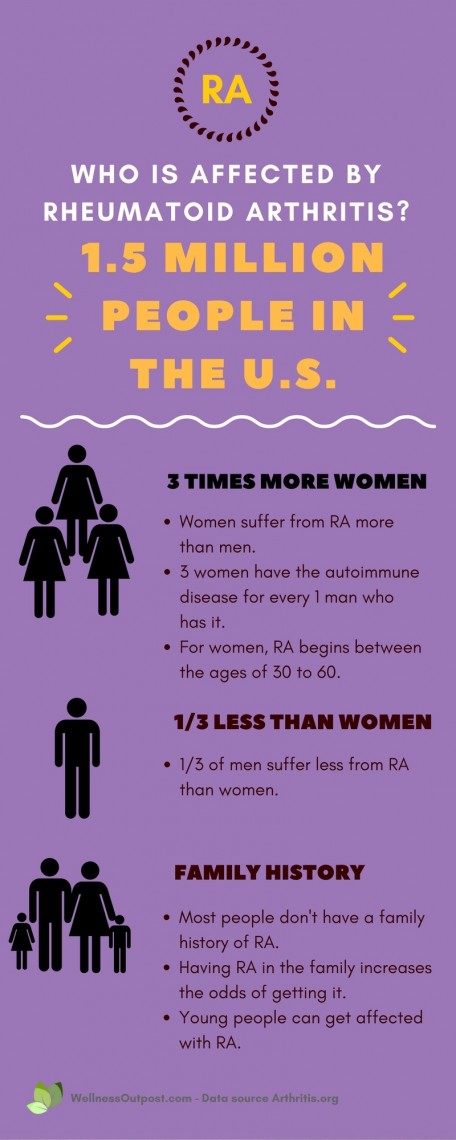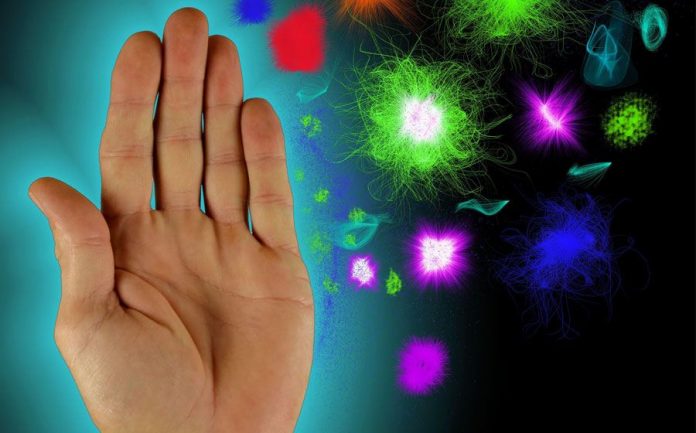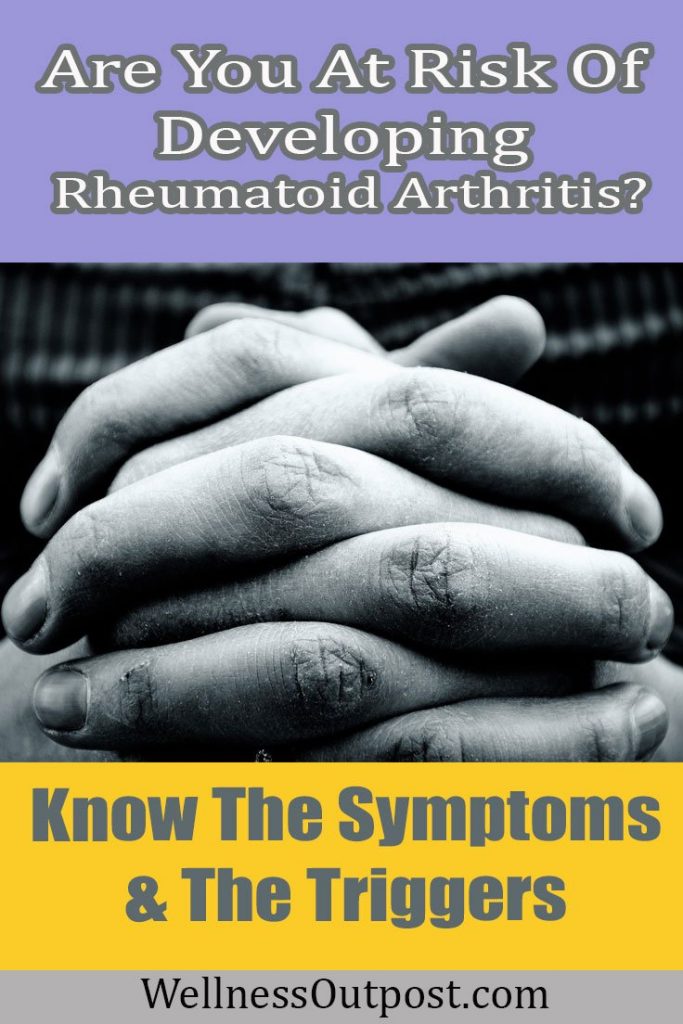Rheumatoid Arthritis (RA) is an autoimmune disease with four common risk factors. The symptoms related to RA can be felt mostly around the joints. The “autoimmune” part of the equation means that the immune system attacks the joints by mistake instead of attacking viruses and bacteria in the body.
RA is often compared to Lupus, which is another autoimmune disease. In fact, the two conditions are sometimes confused with each other because they share many symptoms related to inflammation.
But do you know for a fact if you have Rheumatoid Arthritis? This post will give you some ideas and clues. Pay attention because things can get worse if your arthritis is gone unchecked and unmanaged.
Post Contents
Introduction – What is Rheumatoid Arthritis (RA)?
Arthritis refers to joint disease and joint pain that can affect people of all races, sexes, and ages. There are over 100 types of diseases that are related to arthritis.
RA not only affects adult women and men, but it also affects young people. You can get arthritis at 30 years old or younger. Per Dr. John M. Davis III of the Mayo Clinic, the early signs of Rheumatoid Arthritis in young adults show that the disease is affecting about 1 in every 400 or 500 women in their 20’s and 1 in approximately every 1000 men in the same age group.
To define RA clearly, it is a disease that can attack and continue attacking the cartilage that covers joints, and even bones. RA can flare up and get worse when you over exert yourself. It can also become problematic when you don’t sleep much, or when you have an infection in your body.
For example, you will feel body stiffness, foot pain in the morning, hand joint pain when you least expect it, or will have difficulties doing simple tasks.
When you learn how to manage your stress, strengthen your immune system, eat more healthy foods, and change your habits, you may be able to feel better and live almost symptom-free.
Common Types Of Arthritis – RA and OA
The two most common types of arthritis are Rheumatoid Arthritis (RA) and Osteoarthritis (OA).
Although both of these types of arthritis deal with joint pain, the cause that creates them is what differentiates them. Whereas Osteoarthritis is caused by wear and tear of joints (i.e. around the knees, or around the hips), Rheumatoid Arthritis is caused by the body’s own immune system attacking the joints in the body.
Are You At Risk? Common Rheumatoid Arthritis Risk Factors
Here are the top RA risk factors that may increase your chance of getting the disease:
- Your gender. Apparently women get it more often than men. This fact suggests that maybe hormones play a role in developing RA. A study on RA showed that middle aged women who developed RA at a later age did not have as many joint symptoms during their menstrual cycles or pregnancy (when estrogen and progesterone are at their peak state).
- Your genetics and family history. Experts say that you don’t necessarily inherit RA, but rather the conditions that facilitate getting it.
- Environmental factors. Your chances of getting RA increase if you smoke or have been exposed to prolonged smoking environments.
- Your diet. Your situation can be aggravated by the wrong “inflammatory” foods, such as sugary drinks, or foods high in carbohydrates; it can also be aggravated by bad bacteria in your gut. Adding anti-inflammatory foods, such as avocados, and foods that can improve your gut health, such as probiotics or fermented foods, may be important.
Who Is Affected by Rheumatoid Arthritis?
According to arthritis.org, there are about 1.5 million Rheumatoid Arthritis sufferers in the United States.
Unfortunately, women have it a lot worse than men. For every man who gets affected by arthritis, 3 women get the disease.
 Early Signs of Rheumatoid Arthritis – What Does RA Feel Like?
Early Signs of Rheumatoid Arthritis – What Does RA Feel Like?
In natural circumstances, inflammation can occur when food allergies are present, or when the body is fighting an infection or an injury of some sort.
This is when an army of white blood cells rush to the scene and help protect the body from harm, while destroying bad bacteria, and repairing tissue. You can feel the inflammation manifest itself in the form of swelling and soreness.
Arthritis feels very uncomfortable, to say the least. Here is how it might feel like to have RA:
- You may get Rheumatoid Arthritis rash.
- You may wake up feeling tired.
- You may notice some swelling in your body.
- You may feel pain and swelling in your fingers, or hand joints (around your knuckles).
- You may feel “heavy” with pain all over your body, and don’t want to get out of bed.
- You may have swelling in your shoulders area, elbows area, knees, or ankles.
- You may have stiffness, fatigue, and feel exhausted.
- You may have RA symptoms that resemble the flu, with aches and pains that extend to your bones.
- It may hurt to walk at times, hold objects, or lift things like full grocery bags.
- You may lose some functions of your body. In severe Rheumatoid Arthritis conditions, you may feel your fingers locking up.
This type of inflammation can get worse with the types of foods that you consume. Our bodies are not equipped to handle all the possible food combinations together.
The more fats and carbs you mix together, the more the body gets inflamed and needs to be repaired. Check out this guide on the proper food combination from Dr. Jeremy Kaslow. Living with arthritis can be a challenge.
Doing even the smallest things, such as opening the lid of a jar, walking up the stairs, or carrying items can be painful. There are a lot of products that can help a person with arthritis live a less painful life. For a starter list, check out our post titled 25 Perfect Gifts For People With Arthritis.
Here’s a summary of these early warning signs.
What Parts Can Be Affected By Rheumatoid Arthritis?
RA can be felt around all areas of the body where joints exist. This includes these parts:
- Hands.
- Elbows.
- Wrists.
- Ankles.
- Shoulders.
- Feet.
- Neck.
- Knees.
Usually, both halves of the body get affected. So, if the left knee has arthritis pain, the right knee has pain as well.
It might be difficult to find out if you have RA at the beginning stages of the disease because the symptoms may resemble other conditions. However, with time, blood tests can determine if your body is suffering from severe inflammation.
At times, the condition progresses to the point where the cartilage around the joint becomes too small, or too thin. This creates more pain and discomfort.
RA can affect other organs of the body as well as joints. The following complications may occur:
- Your eyes – They can get dry, red, and sensitive to light, or have pain.
- Your skin – You could feel small lumps over bony areas of your body.
- Your lungs – You may feel short of breath.
- Your mouth – You may experience dryness and gum irritation.
- Your blood – Your red blood cells may be low, meaning they’re not getting enough oxygen, a state that can cause anemia.
Is Rheumatoid Arthritis Hereditary?
The verdict is not out on whether or not RA develops based on inherited genes alone.
What is clear is that if you have a close member of your family who has Rheumatoid Arthritis, it is more likely that you may develop the disease.
Having this condition is somewhat related to your genes, your environment, and a weak immune system.
Genes + ENVIRONMENT + Immune System = Potential Development Of Rheumatoid ARTHRITIS.
Rheumatoid Arthritis Prevention – Can RA Be Reversed?
The last few years have seen amazing progress in the treatment of Rheumatoid Arthritis.
A lot of the bad effects from Rheumatoid Arthritis, as well as the damages that RA can cause, may be managed successfully with diet and exercise. This means that although your adult body cannot regenerate cartilage that was lost as a result of RA, it can become symptoms-free if you follow some lifestyle changes, especially if your condition has not deteriorated too severely.
It is impossible to control your age or your genetic disposition, but it is manageable to control your diet and your environment.
What Diet Is Best For RA?
Honestly, any diet that will lower the inflammation in your body would be a good diet.
It might be an eye opener, and beneficial to investigate the keto diet, the paleo diet, and the plant based diet. When done correctly, they can all work on reducing inflammation in the body. There are other diets out there as well, but let’s just concentrate on these 3 for now.
- The ketogenic diet. This diet stresses on “ketone bodies” which are formed when the body switches from using carbs to using fat for energy. The keto diet is high in good fats, medium in protein, and low in carbohydrates. Dairy is allowed moderately on this diet, but dairy foods, such as cheese and milk, may be triggers for RA sufferers.
- The paleo diet. It is short for Paleolithic diet. The paleo diet concentrates on foods that are assumed to have been the primary nutrients of cave men and women. It allows for more carbohydrates than the keto diet, and it stresses on fish, meat, nuts, leafy greens, fruits, and vegetables. Dairy foods are controversial on the diet, since they were apparently not consumed by cave men and cave women; therefore, most paleo followers avoid dairy. Processed foods are absolutely out of the question on this diet. In a nutshell… If a cave man or woman ate it, you can eat it!
- The plant based diet. The plant based diet concentrates on whole foods that are vegan or vegetarian in quality. The idea is to stay away from processed carbohydrates found in a lot of the foods labeled as “vegan” or “vegetarian” (i.e. vegan pizza with white bread, or vegan pop tarts) and include foods found primarily in the produce isle. Some avoid, or minimize, the consumption of dairy and fats as well.
What About Fasting? Is Fasting Effective For Rheumatoid Arthritis?
A recent study that included people with RA has shown the benefits of intermittent fasting in lessening the symptoms of the disease. Make sure to consult with your physician if you have any question on fasting.
If you’re interested in finding out more about the keto diet and intermittent fasting, read our post titled Ketogenic Diet And Fasting 101 (For Weight Loss, Brain, Skin, Wellness).
Can RA Be Reversed?
 It may be possible to stop the progression of the disease.
It may be possible to stop the progression of the disease.
By staying as healthy as possible, avoiding conditions that can weaken your immune system (i.e. being around people with the flu), you can potentially put RA in remission and your quality of life may improve.
This is better than treating the condition with RA drugs that can be potentially toxic to your body.
Common RA Medicine
Cortosteroids. They are a class of steroid hormones similar to natural hormones. Cortosteroids are taken by mouth to help sooth joint pain during a flare and inflammation. They are considered as “bridge therapy” because they bridge between two phases in the treatment of the disease (i.e. when medication is changed or modified to another type of medication).
Prednisone. This is a synthetic cortosteroid. Prednisone helps fight inflammation. A Prednisone dosage for Rheumatoid Arthritis may be necessary to slow the bone erosion at the beginning stages of RA.
There are always new arthritis treatments that get developed. There is also a variety of other medical drugs that are usually prescribed for RA. You can take a look at a comprehensive list here.
What Is The Rheumatoid Arthritis Prognosis? Can You Die From RA?
RA by itself is not considered as a terminal or fatal illness. It is a “chronic” disease. This means that you will have to manage it as it will accompany you throughout your life.
We are all going to die of one thing or another. Sometimes the disease does not kill, but the complications that may result from having Rheumatoid Arthritis can be fatal, just like any other complications from other diseases.
Various blood tests can be done to find out if the body is suffering from inflammation. One of them determines if the erythrocyte sedimentation rate (ESR, or sed rate) or C-reactive protein (CRP) are elevated in the blood, signaling a form of inflammation.
If you do have Rheumatoid Arthritis, don’t despair. Living with Rheumatoid Arthritis is not a death sentence! Wake up every day with a positive outlook on life. You can live with RA and may be able to conquer its symptoms.
If you don’t get your RA under control, some complications could include:
- Skin issues.
- Lung problems (breathing issues).
- Blood disease (such as anemia).
- Heart problems.
- Inflammation in the eyes.
- Infections.
- Depression. Check out how to combat depression with our post titled Don’t Be The Most Stressed Out Person You Know (Avoid These 8 Traps).
- Pain in the neck area.
Final Thoughts On The Early Signs And Symptoms Of RA
If you feel your hands, elbows, wrists, ankles, feet, or knees start to swell up and ache, look into whether or not you have RA.
It could be difficult to diagnose RA during the early stages, because the symptoms could be confused with other diseases, such as Lupus.
To stay in remission, avoid highly processed carbohydrates and sugary foods. They will only make your condition worse. Stick with foods that are natural, and not those highly processed and manufactured foods in the grocery store aisles.
Most importantly, avoid stressing your joints too much and get the help of simple yet powerful products that may aid you in your daily routine.
It’s your turn.
Do you have a story to share about Rheumatoid Arthritis? Share your thoughts below and let us know.
Be well.
































